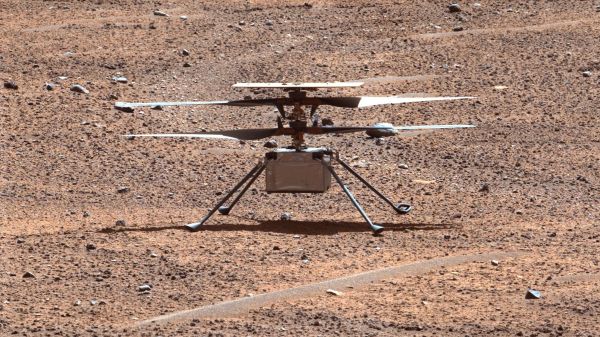It looks like we won’t have Cruise to kick around in this space anymore with the news that General Motors is pulling the plug on its woe-beset robotaxi project. Cruise, which GM acquired in 2016, fielded autonomous vehicles in various test markets, but the fleet racked up enough high-profile mishaps (first item) for California regulators to shut down test programs in the state last year. The inevitable layoffs ensued, and GM is now killing off its efforts to build robotaxis to concentrate on incorporating the Cruise technology into its “Super Cruise” suite of driver-assistance features for its full line of cars and trucks. We feel like this might be a tacit admission that surmounting the problems of fully autonomous driving is just too hard a nut to crack profitably with current technology, since Super Cruise uses eye-tracking cameras to make sure the driver is paying attention to the road ahead when automation features are engaged. Basically, GM is admitting there still needs to be meat in the seat, at least for now.
Ingenuity31 Articles
NASA’s Ingenuity Mars Helicopter Transitions Into Stationary Testbed
On April 16th NASA announced the formal end to Ingenuity’s days as the first ever Martian helicopter, following its 72nd and final flight mission in January. This flight ended with a rough landing during which the helicopter’s blades got damaged and separated, leaving the plucky flying machine with its wings clipped. During the final meet-up of the Mars Helicopter Team there was cake, but none for Ingenuity as its latest data set was reviewed by the team from 304 million kilometers away. This data confirms the latest software patch allows it to work stand-alone as a data collection platform.
With these latest software changes, Ingenuity will wake up daily, activate its computers and perform a self-check of all its components before collecting sensor data and images. The main goal of this is to collect long-term performance data on the helicopter’s systems, with enough onboard memory to allow for measurements to be stored for around 20 years. This means that although the Perseverance rover will have to trundle on without its flying mission buddy, one day in the future another rover, helicopter or primate will presumably drop by to either communicate with Ingenuity if it’s still alive, or harvest its memory unit for data retrieval.
Thanks to [Mark Stevens] for the tip.
Hackaday Links: March 10, 2024
We all know that we’re living in a surveillance state that would make Orwell himself shake his head, but it looks like at least one company in this space has gone a little rogue. According to reports, AI surveillance start-up Flock <<insert gratuitous “What the Flock?” joke here>> has installed at least 200 of its car-tracking cameras on public roads in South Carolina alone. That’s a serious whoopsie, especially since it’s illegal to install anything on state infrastructure without permission, which it appears Flock failed to obtain. South Carolina authorities are making a good show of being outraged about this, but it sort of rings hollow to us, especially since Flock now claims that 70% of the population (of the USA, we presume) is covered by their technology. Also, police departments across the country are in love with Flock’s service, which lets them accurately track the movements of potential suspects, which of course is everyone. No word on whether Flock will have to remove the rogue cameras, but we’re not holding our breath.
Hackaday Links: March 3, 2024
Who’d have thought that $30 doorbell cameras would end up being security liabilities? That’s the somewhat obvious conclusion reached by Consumer Reports after looking at some entry-level doorbell cameras available through the usual outfits and finding glaring security gaps which are totally not intentional in any way.
All these cameras appear to be the same basic hardware inside different enclosures, most supporting the same mobile app. Our favorite “exploit” for these cameras is the ability to put them into a pairing mode with the app, sometimes by pressing a public-facing button. Slightly more technically challenging would be accessing images from the app using the camera’s serial number, or finding file names being passed in plain text while sniffing network traffic. And that’s just the problems CR identified; who knows what else lurks under the covers? Some retailers have stopped offering these things, others have yet to, so buyer beware.
Speaking of our techno-dystopian surveillance state, if you’ve had it with the frustrations and expense of printers, has Hewlett-Packard got a deal for you. They want you to never own a printer again, preferring that you rent it from them instead. Their “All-In Plan” launched this week, which for $6.99 a month will set up up with an HP Envy inkjet printer, ink deliveries, and 24/7 tech support. It doesn’t appear that paper is included in the deal, so you’re on your own for that, but fear not — you won’t go through much since the entry-level plan only allows 20 prints per month. Plans scale up to 700 prints per month from an OfficeJet Pro for the low, low price of $36. The kicker, of course, is that your their printer has to be connected to the Internet, and HP can pretty much brick the thing anytime they want to. The terms of service also explicitly state that they’ll be sending your information to advertising partners, so that’ll be fun. This scheme hearkens back to the old pre-breakup days of AT&T, where you rented your phone from the phone company. That model made a lot more sense when the phone (probably) wasn’t listening in on everything you do. This just seems like asking for trouble.

It’s been a while since Ingenuity‘s final rough landing on Mars permanently grounded the overachieving helicopter, long enough that it’s time for the post-mortem analyses to begin. The first photographic evidence we had was a shadowgram from one of the helicopter’s navigational cameras, showing damage to at least one of the rotor tips, presumably from contact with the ground. Then we were treated to a long-distance shot from Ingenuity‘s rover buddy Perseverance, which trained its MASTCAM instruments on the crash zone and gave us a wide view of its lonely resting place.
Now, geovisual design student [Simeon Schmauβ] has taken long shots made with the rover’s SuperCam instrument and processed them into amazingly detailed closeups, which show just how extensive the damage really is. One rotor blade sheared clean off on contact, flying 15 meters before gouging a hole in the regolith. Another blade looks to be about half gone, while the remaining two blades show the damaged tips we’ve already seen. That the helicopter is still on its feet given the obvious violence of the crash is amazing, as well as an incredible piece of luck, since it means the craft’s solar panel is pointing in roughly the right direction to keep it powered up.
Hackaday Links: February 11, 2024
Apple’s Vision Pro augmented reality goggles made a big splash in the news this week, and try as we might to resist the urge to dunk on them, early adopters spotted in the wild are making it way too easy. Granted, we’re not sure how many of these people are actually early adopters as opposed to paid influencers, but there was still quite a bit of silliness to be had, most of it on X/Twitter. We’d love to say that peak idiocy was achieved by those who showed themselves behind the wheels of their Teslas while wearing their goggles, with one aiming for an early adopter perfecta, but alas, most of these stories appear to be at least partially contrived. Some people were spotted doing their best to get themselves killed, others were content to just look foolish, especially since we’ve heard that the virtual keyboard is currently too slow for anything but hunt-and-peck typing, which Casey Niestat seemed to confirm with his field testing. After seeing all this, we’re still unsure why someone would strap $4,000 worth of peripheral-vision-restricting and easily fenced hardware to their heads, but hey — different strokes. And for those of you wondering why these things are so expensive, we’ve got you covered.
Hackaday Links: February 4, 2024
Things may not have gone as planned last week for the flying cellphone on Mars, but just because Ingenuity‘s flying career is over doesn’t mean there’s no more work to do. NASA announced this week that it’s going to try a series of “wiggle” maneuvers on Ingenuity‘s rotors, in an attempt to get a better look at the damage to the blade tips and possibly get some clues as to what went wrong. The conjecture at the moment seems to be that a large area of relatively featureless terrain confused the navigation system, which uses down-facing cameras to track terrain features. If the navigation program couldn’t get a bead on exactly how far above the ground it was, it’s possible the copter came in too hard and caused the rotor tips to dig into the regolith. There seems to be some photographic suggestion of that, with what looks like divots in the ground about where you’d expect the rotor tips to dig in, and even scraps of material that look out of place and seem to be about the same color as the rotor blades. All this remains to be seen, of course, and we’re sure that NASA and JPL are poring over all available data to piece together what happened. As much as we hate to say goodbye to Ingenuity, we eagerly await the post-mortem.
Ingenuity May Be Grounded, But Its Legacy Will Be Grand
[Eric Berger] has a thoughtful and detailed article explaining why Ingenuity, NASA’s small helicopter on Mars, was probably far more revolutionary than many realize, and has a legacy to grant the future of off-world exploration that is already being felt.
Ingenuity was recently grounded due to rotor damage, having already performed far beyond the scope of its original mission. The damage, visible by way of a shadow from one of the rotors, might not look like much at first glance, but flying in the vanishingly-thin atmosphere of Mars requires the 1.18 meter (3.9 foot) carbon fiber blades to spin at very high speeds — meaning even minor rotor damage could be devastating.

[Eric] points out a lot that is deeply interesting and influential about Ingenuity. Not only is successful powered flight on another planet a real Wright brothers moment, but how Ingenuity came to be validates a profoundly different engineering approach for NASA.
To work in the space industry is to be constrained by mass. But even so, Ingenuity‘s creators had a mere four pounds to work with. That’s for rotors, hardware, electronics, batteries, solar panel — all of it. NASA’s lightest computer module alone weighed a pound, so engineers had no choice but to depart from the usual NASA way of doing things to get it done at all. Not everyone at NASA was on board. But Ingenuity worked, and it worked wonderfully.
Powered flight opens new doors, and not just for support roles like navigation planning. There’s real science that can be done if powered flight is on the table. For example, [Eric] points out that inaccessible terrain such as the Valles Marineris canyon on Mars is doubtlessly scientifically fascinating, but at 4,000 km long and up to 7 km deep, rover-based exploration is not an option.












